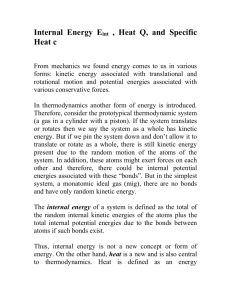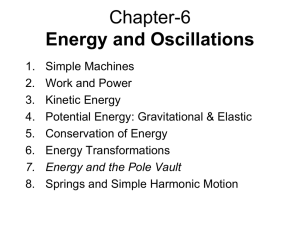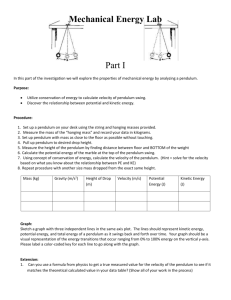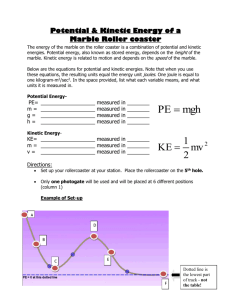Conservation of Energy: The Simple Pendulum
advertisement
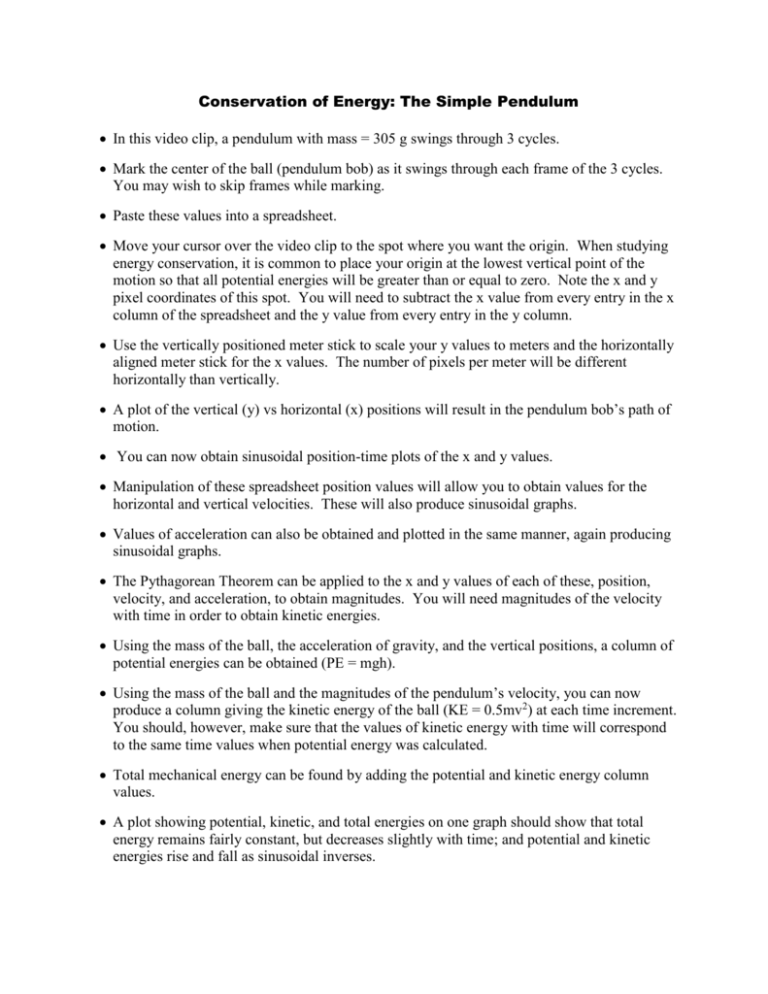
Conservation of Energy: The Simple Pendulum In this video clip, a pendulum with mass = 305 g swings through 3 cycles. Mark the center of the ball (pendulum bob) as it swings through each frame of the 3 cycles. You may wish to skip frames while marking. Paste these values into a spreadsheet. Move your cursor over the video clip to the spot where you want the origin. When studying energy conservation, it is common to place your origin at the lowest vertical point of the motion so that all potential energies will be greater than or equal to zero. Note the x and y pixel coordinates of this spot. You will need to subtract the x value from every entry in the x column of the spreadsheet and the y value from every entry in the y column. Use the vertically positioned meter stick to scale your y values to meters and the horizontally aligned meter stick for the x values. The number of pixels per meter will be different horizontally than vertically. A plot of the vertical (y) vs horizontal (x) positions will result in the pendulum bob’s path of motion. You can now obtain sinusoidal position-time plots of the x and y values. Manipulation of these spreadsheet position values will allow you to obtain values for the horizontal and vertical velocities. These will also produce sinusoidal graphs. Values of acceleration can also be obtained and plotted in the same manner, again producing sinusoidal graphs. The Pythagorean Theorem can be applied to the x and y values of each of these, position, velocity, and acceleration, to obtain magnitudes. You will need magnitudes of the velocity with time in order to obtain kinetic energies. Using the mass of the ball, the acceleration of gravity, and the vertical positions, a column of potential energies can be obtained (PE = mgh). Using the mass of the ball and the magnitudes of the pendulum’s velocity, you can now produce a column giving the kinetic energy of the ball (KE = 0.5mv2) at each time increment. You should, however, make sure that the values of kinetic energy with time will correspond to the same time values when potential energy was calculated. Total mechanical energy can be found by adding the potential and kinetic energy column values. A plot showing potential, kinetic, and total energies on one graph should show that total energy remains fairly constant, but decreases slightly with time; and potential and kinetic energies rise and fall as sinusoidal inverses.



